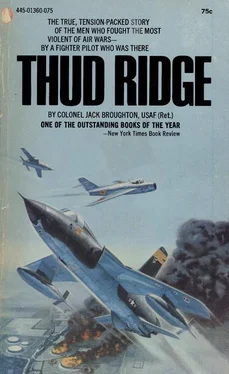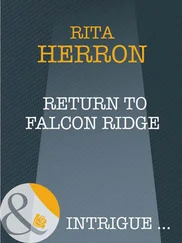When I was there, we flew taking advantage of these triuisms and our know-how. They now have standard rules and standard tactics directed from a headquarters thousands of miles away. But in that environment, the true payoff depends on the airborne smarts and tactical flying skill of the mission leader and his team. Nothing else will get the job done right with minimum losses, but unfortunately the only ones who know this are those who have been there, or those who will listen to those who have been there. I am constantly amazed at the number of instant experts who have lost the ability to listen. The North Vietnamese don’t read the academic studies done in Washington or Honolulu and they don’t undertand or respect the great straight and level strategic bombing prowess that many of our current leaders acquired in the 1940’s; they don’t know they are not supposed to shoot down standardized, headquarters-directed and stereotyped flights. I shudder when I think of the worthless loss of people and machines this ironclad party line of stupid and inflexible tactical ignorance has caused. I understand fighter tactics, and I’ve been there, and I feel very strongly that the astronomical and unacceptable fighter losses, which skyrocketed in the latter part of 1967 to double their previous numbers, were largely due to ineptness, dictatorial enforcement of minuscule and incorrect details of tactical mission accomplishment, and lack of good sense and understanding of the actual air-war situation in the North on the part of command leadership at a high military level. I could well pursue this subject in detail and may do so later. For now, I note it in passing and return to the healthy and stimulating atmosphere of the air war at wing level.
It is important that you know the people you fly with and that you know what they are doing. This does not come from sitting in an air-conditioned office and clucking sternly over unimportant details. It comes from getting hot and sweaty and from getting your fanny shot at. There is no way to shake out people and procedures except by being a part of them. You only learn part of the game when you fly the easy ones; you have to take at least your share of the tough ones. The troops watched that schedule pretty closely. They knew who was leading for effect and who was for real, and they responded accordingly.
The best way to get this togetherness was to work generally with the same group of pilots and definitely in the same squadron. It can be argued that we all should know the same basic job and we are all the same black box that is plugged into the rest of the machinery and thus it should make no difference who flies with whom on any specific mission. I suppose this theory might have some validity in the realm from which it originated and probably any big airplane driver can move his monster from point A to B and back as well as another; it just isn’t so in the fighter business. Anyone who has played ball knows that there are combinations based on talent and the experience of working together that get the job done better It was even more so in this big league.
Any specific fighter wing can be assigned many tasks out side its basic mission of launching a combat effort. My trst year in Southeast Asia centered around our wing s role mother hen for a new fighter base emerging from the gre jungle of Thailand. Our task was to maintain our basic combat posture, and at the same time to provide the pilots, aircraft, support equipment and support people to conduct con-bat strikes out of Takhli, Thailand, until we could physically establish a wing that could stand on its own down then While this was being accomplished, I shuttled back and from Japan to Thailand, and when the job was finished moved into the new wing for full-time duty.
I had not been the only one involved in building a new wing or a new base. From the time of the Gulf of Tonkin incident, it became clear that America was committed to an extensive air effort in North Vietnam and that facilities had to be expanded rapidly to accommodate this effort. South Vietnam was about to sink into the sea from the sheer weight of the American effort there, and was not the place for new airfield construction or expansion. While we stewed under the wraps of security, the news media of the world had little difficulty pinpointing our effort in Thailand. It was well into 1967 before formal press visits to the Thai bases were sanctioned, and even then the clearance was not universal, but the world was informed that we were operating Republic-built F-10 fighter-bombers out of our location at Takhli, Thailand, while the Avis wing was operating the same type of aircraft further to the east at Korat, Thailand. The McDonnell RF-101 reconnaissance aircraft and newer additions to the lineup (the fighter and reconnaissance versions of the McDonnell F-4C were visible to the press from Udorn, Thailand, to Da Nang and Saigon in South Vietnam. The rescue helicopters and their slow but sturdy propeller-driven escorts, the Douglas A IE, were dispersed wherever they would stand the best chance of dashing into hostile territory to recover a downed airman. The giant airborne command and control aircraft, which could help you with a radar vector when they were in flight, and the huge Boeing KC-135 tanker aircraft were very obviously in place when the press entered the scene, and in case there was any doubt in anyone’s mind, their presence confirmed the fact that current fighter-bomber aircraft needed to refuel in flight when they were committed to the North with their heavy bombloads. This the North Vietnamese already knew since their radar watched us daily as we refueled in flight and headed their way without the benefit of surprise.
Thus our force was in place to operate from Thailand to North Vietnam. We had Thuds to strike the enemy and we had either bombing or Mig escort help from the F-4C “Phantoms.” We had tankers to help us keep the fighters full of gas. Our reconnaissance aircraft could take target photographs before and after raids and our choppers, which needed their A1E escorts (we called them Spads, because the AlE’s age and performance approached that of the World War I machine with the same nickname), could sometimes get in and out of enemy territory to accomplish a rescue. Except for occasional equipment modification, the buildup of the force that was to fight in the North was complete and we were ready to probe the Hanoi area.
Fighter pilots call their aircraft birds, and each of our birds has had a name that has sought to point toward some potentially great feature of the machine. The “Thunderbolt,” the “Lightning,” the “Sabre,” were perfect matches of name and appearance. Yet there we were, striking the toughest targets in history, and what were we calling our number one aerial machine of the day? The Thud. Without a doubt, that is the single most unattractive moniker ever attached to a winged craft.
Actually the F-105’s given name was the “Thunderchief.” It came from the publicity office of its manufacturer, Republic Aviation Corporation, and the name stuck for a while during the long struggle that any machine should go through from the drawing board to the flight line. The Thud came from a long line of good aircraft. They have always been comparatively big, heavy, sturdy and most capable of doing the job they were designed for. They have never been the lightweight, turn-on-a-dime delight of the acrobatic champion, but then they were never built to be. The P-47, nicknamed the Jug, with its big radial engine out front, did its job in World War II and the first time I strapped a Jug to me I thought it was the biggest thing I had ever seen. I saw a restored Jug at Wright-Patterson Air Force Base a couple of years ago, and by then it looked like a little bird. The Jug was as true as they come and after some eight hundred hours of flying time in it I had learned my first lesson in respect for Republic products.
Читать дальше












